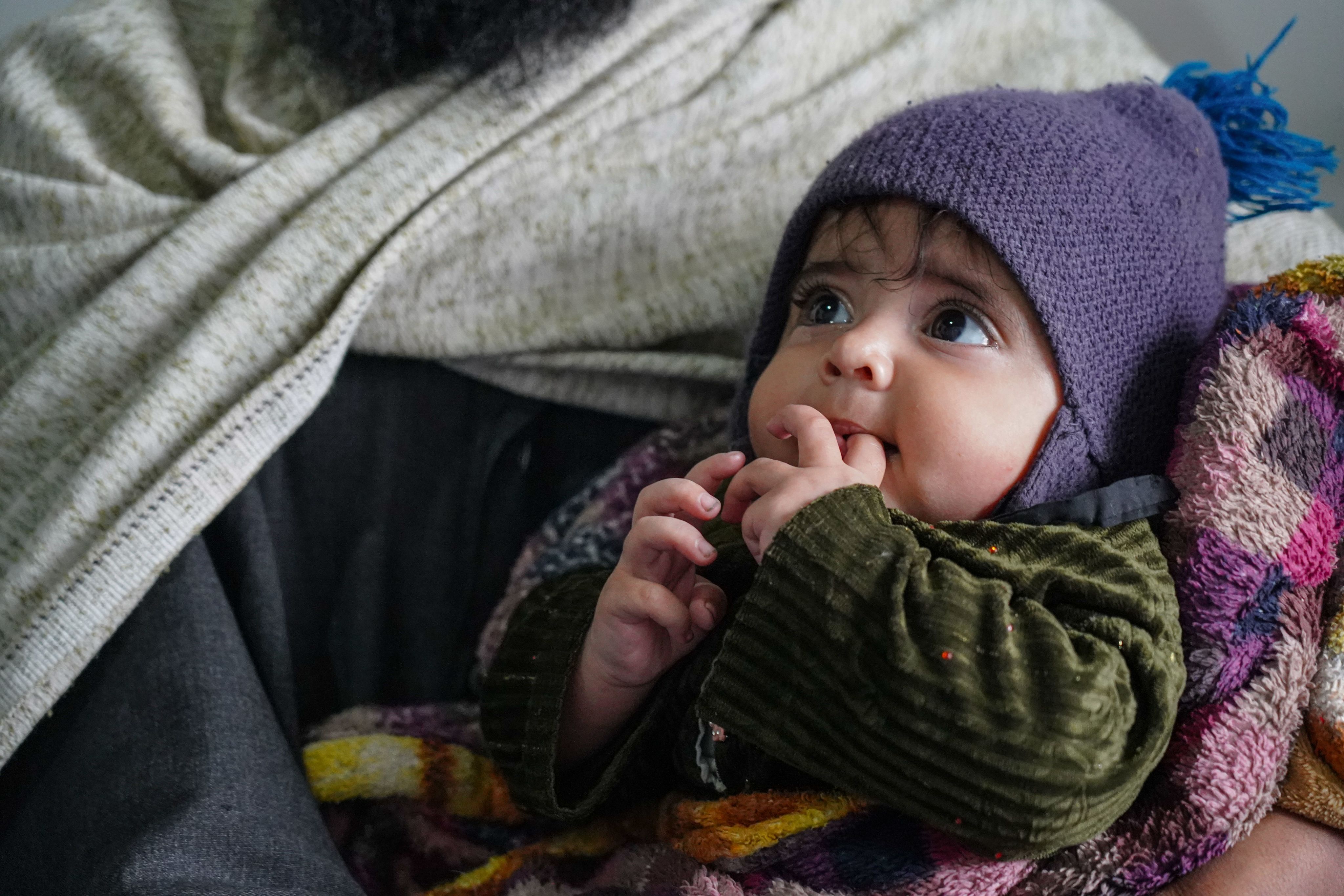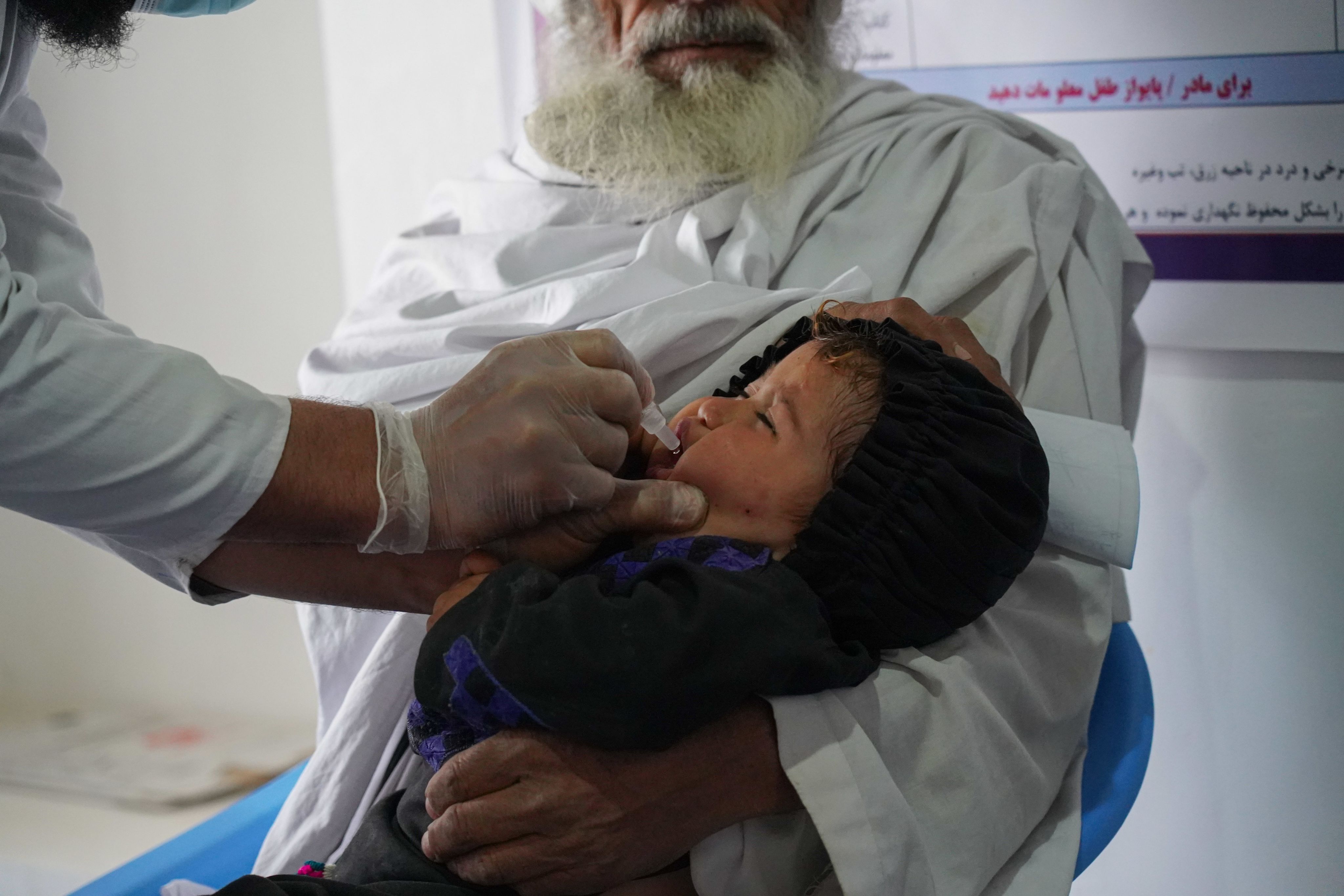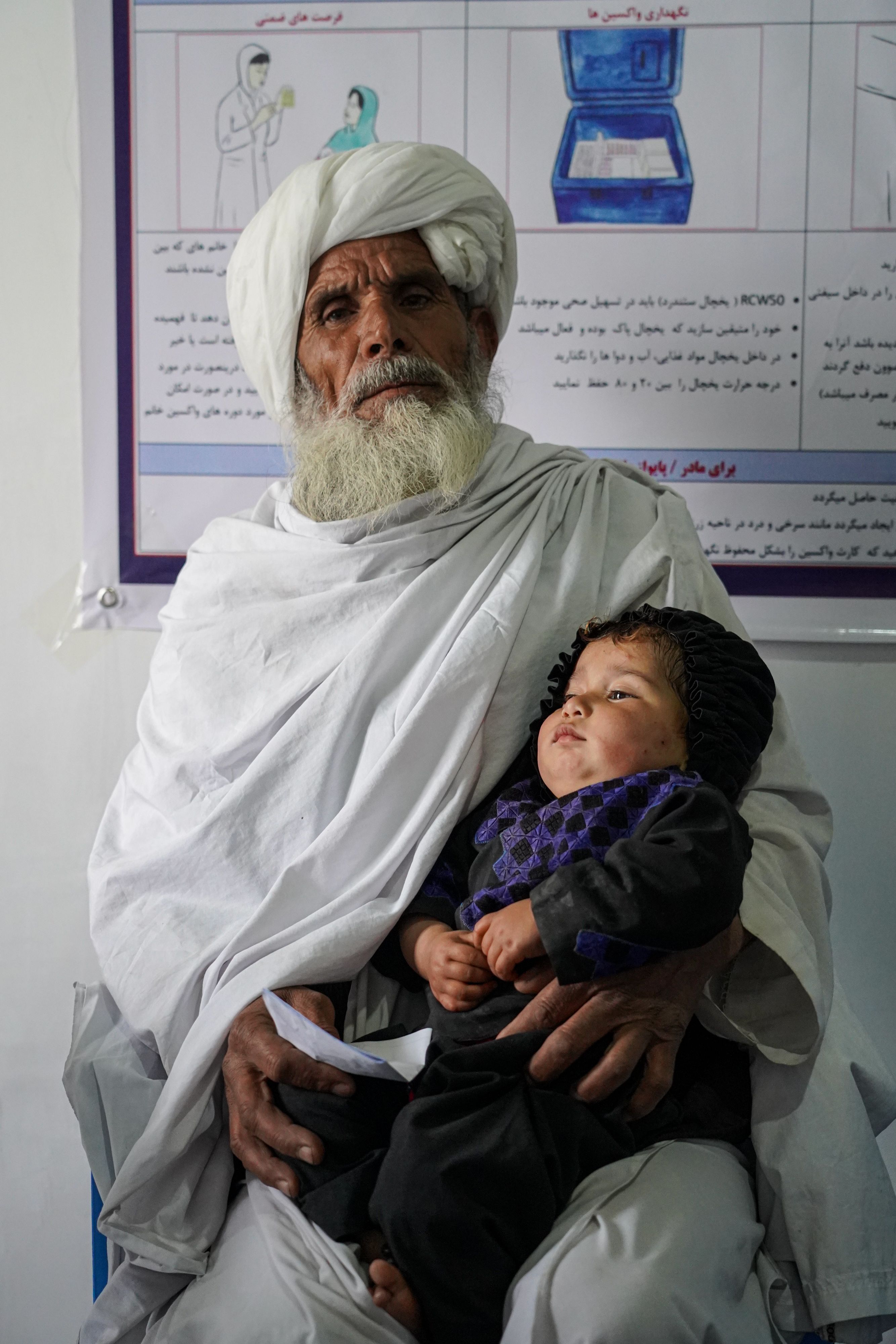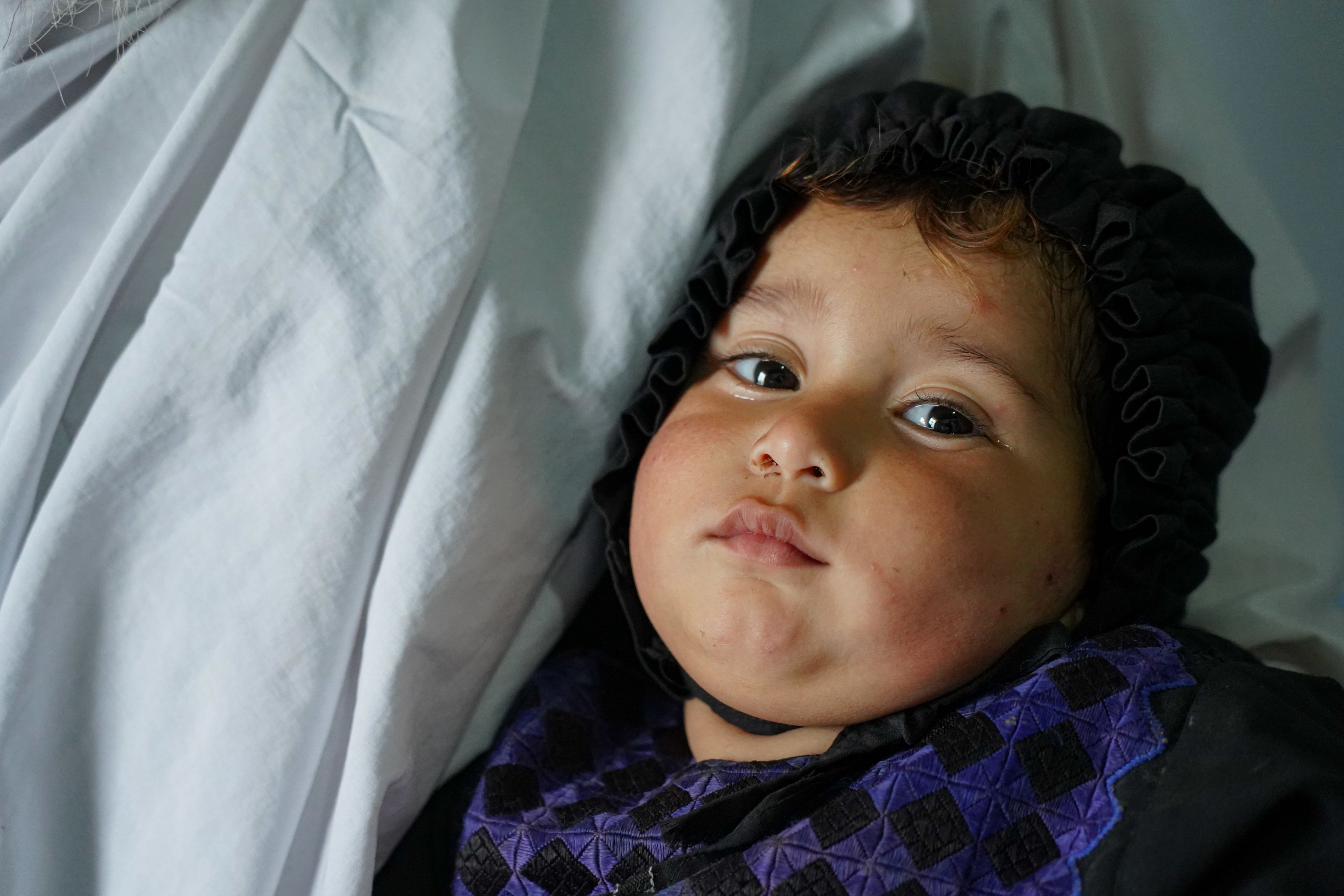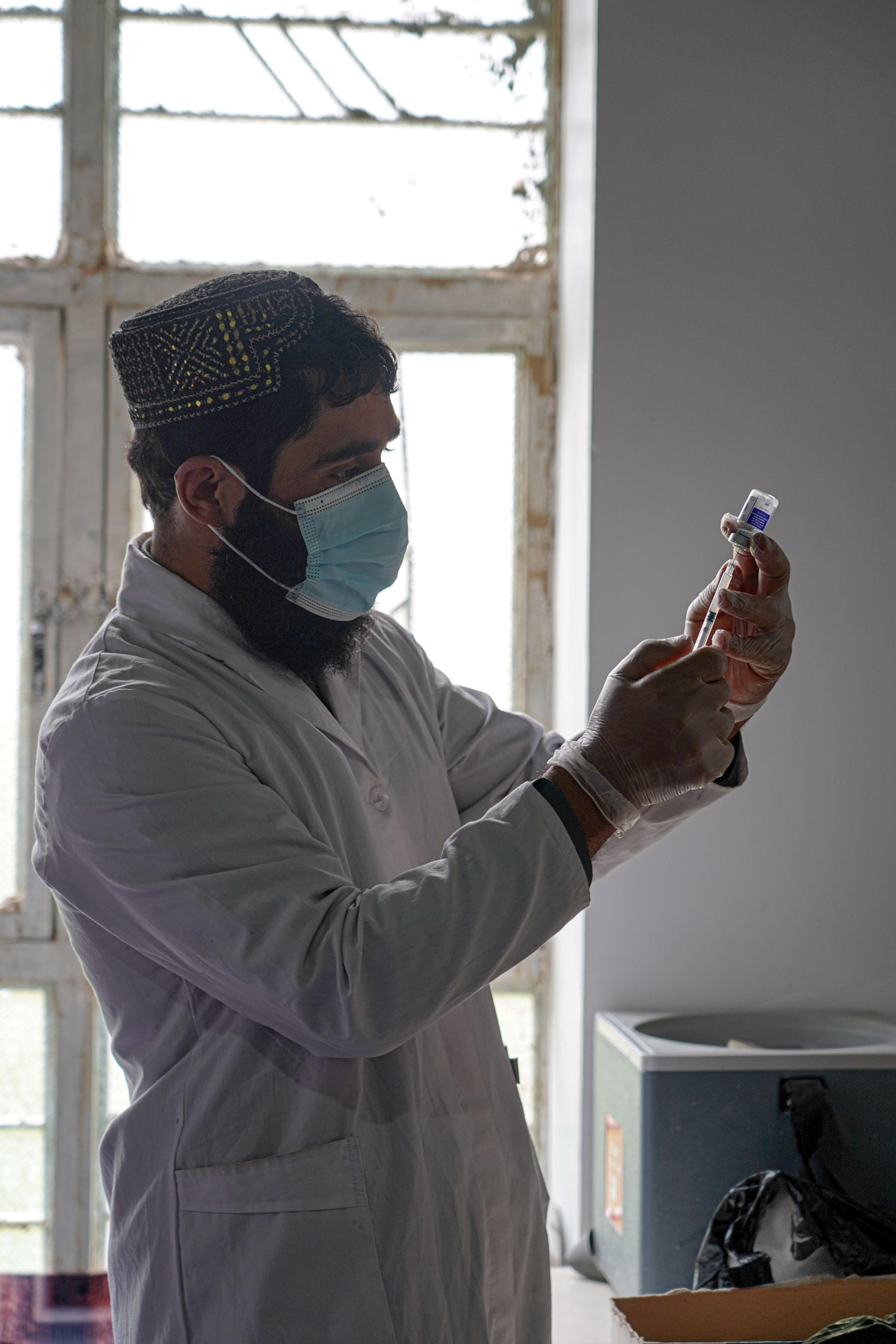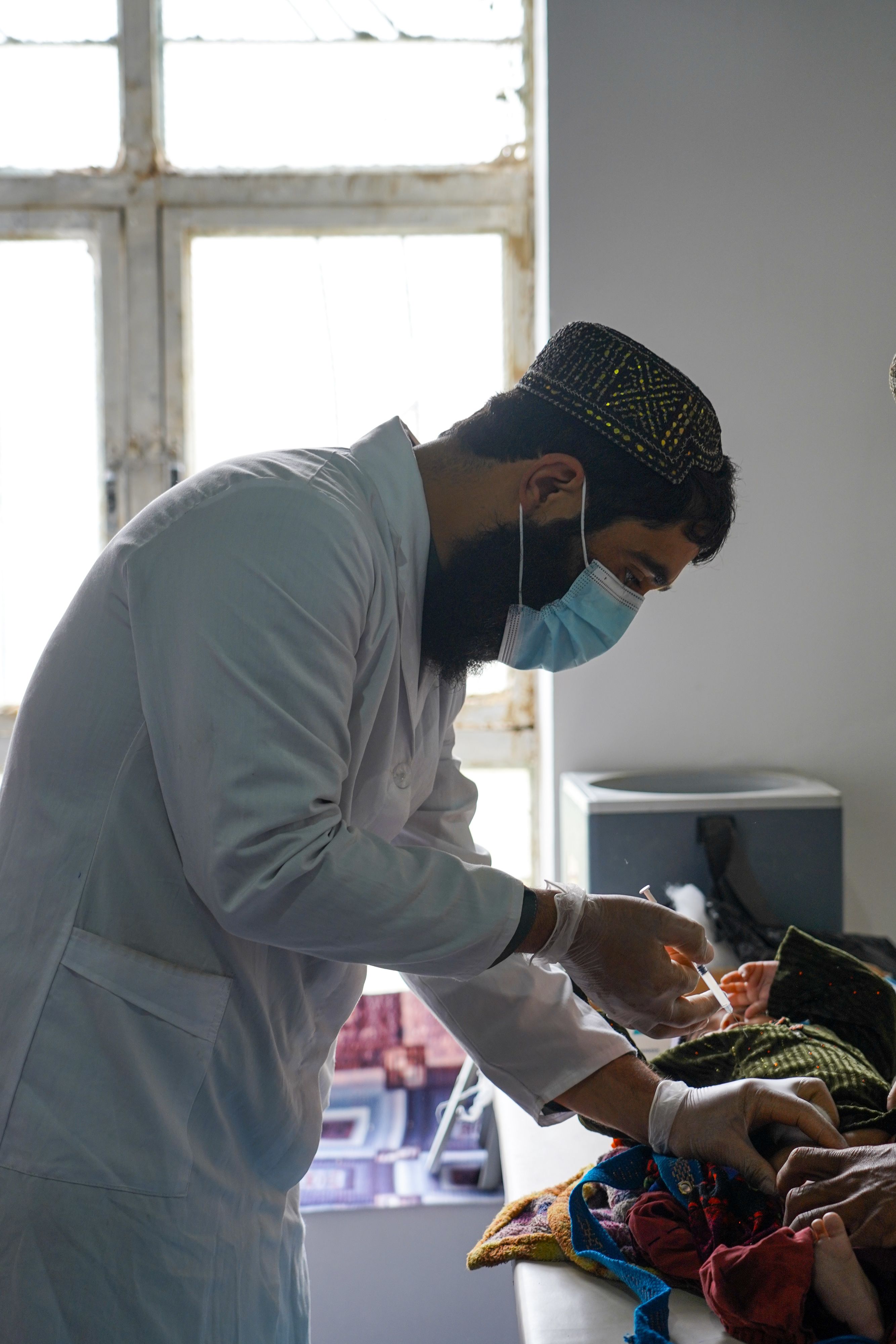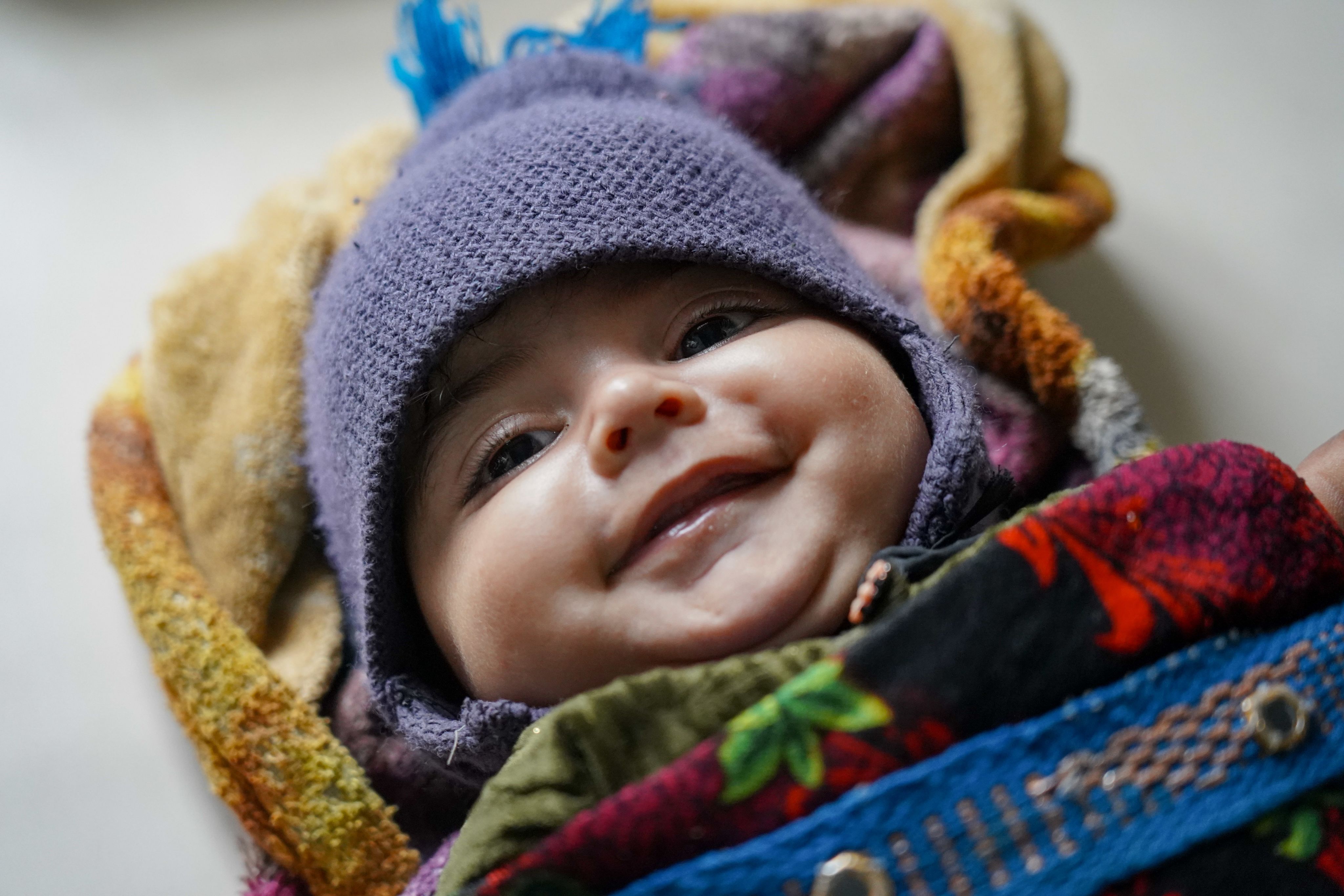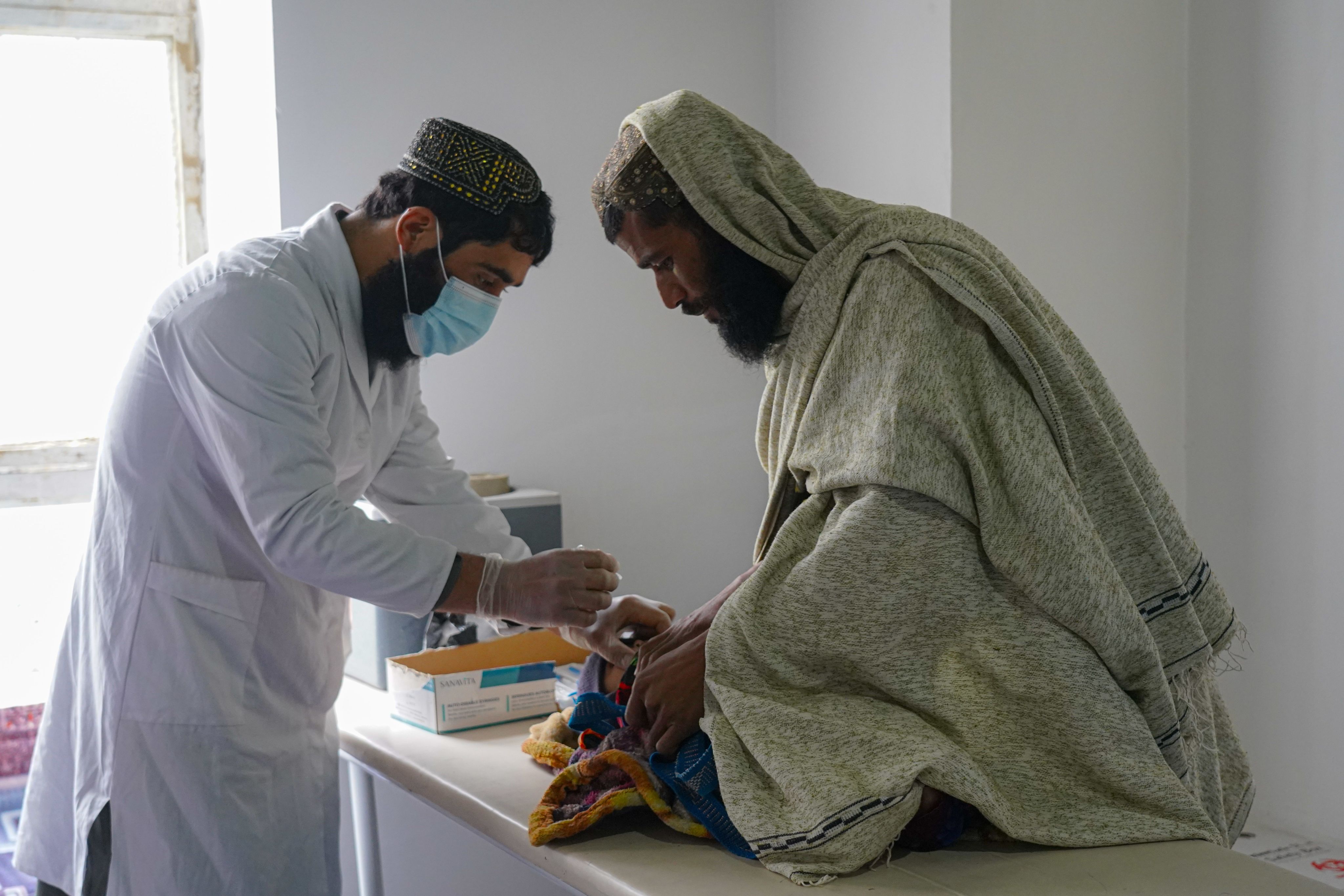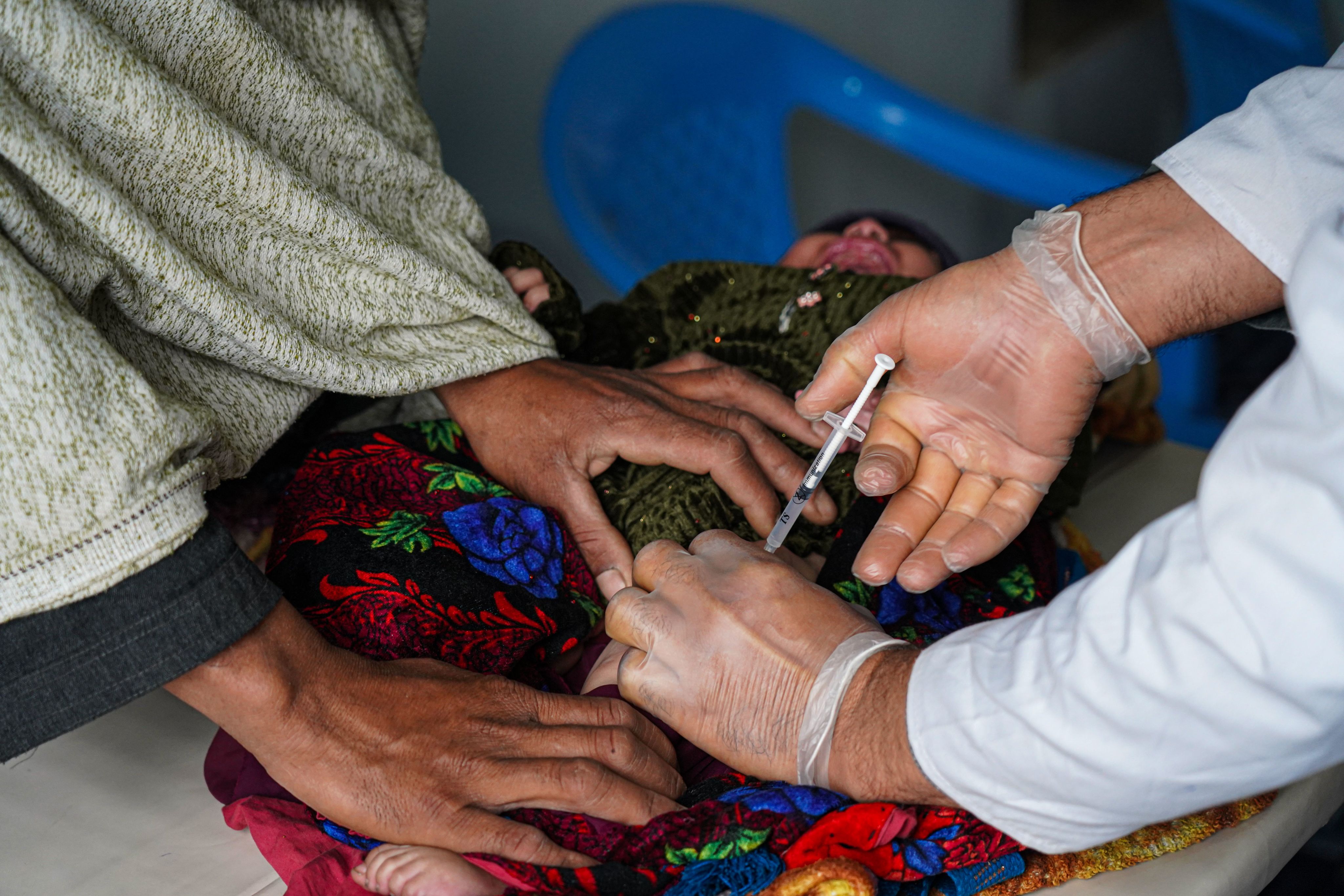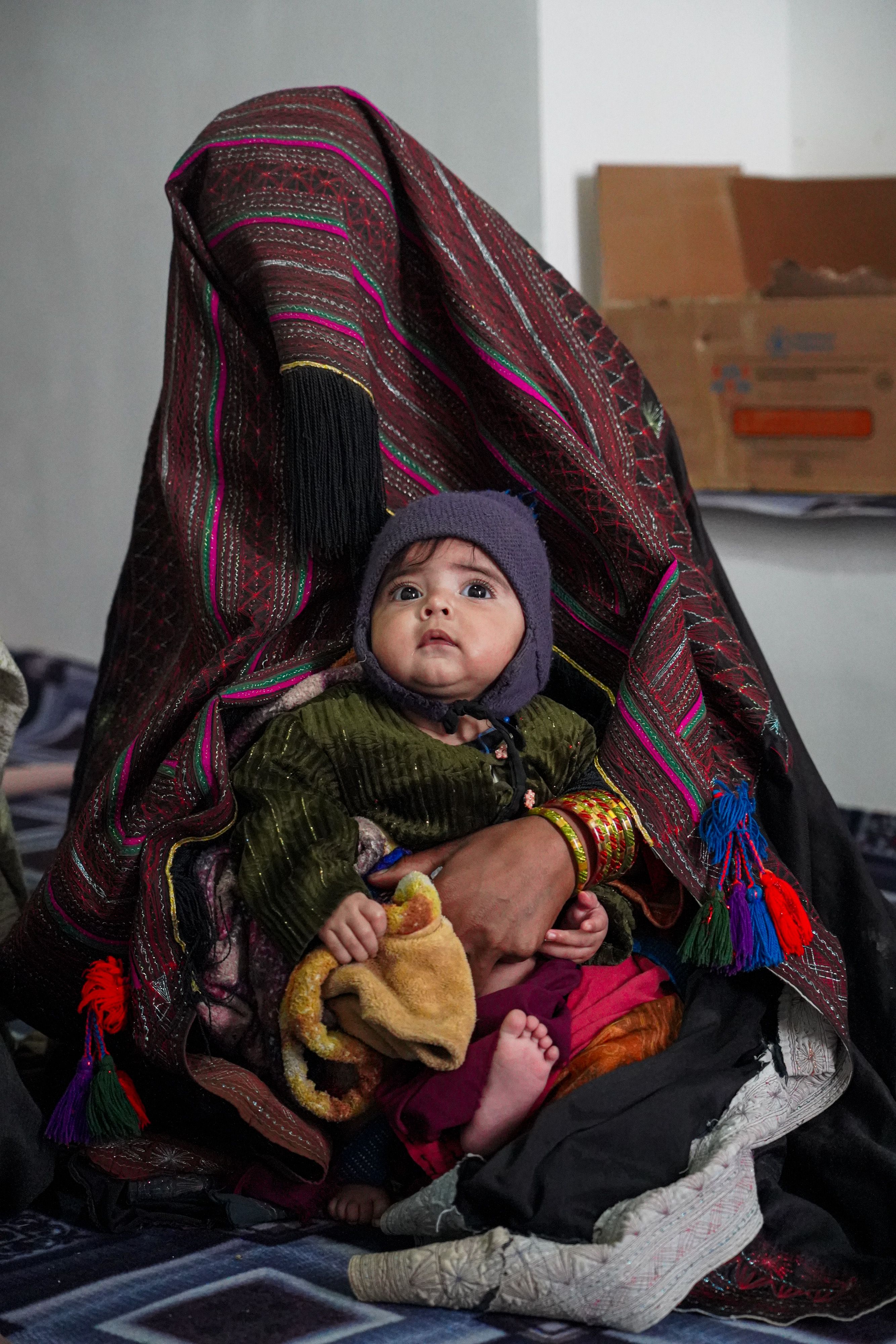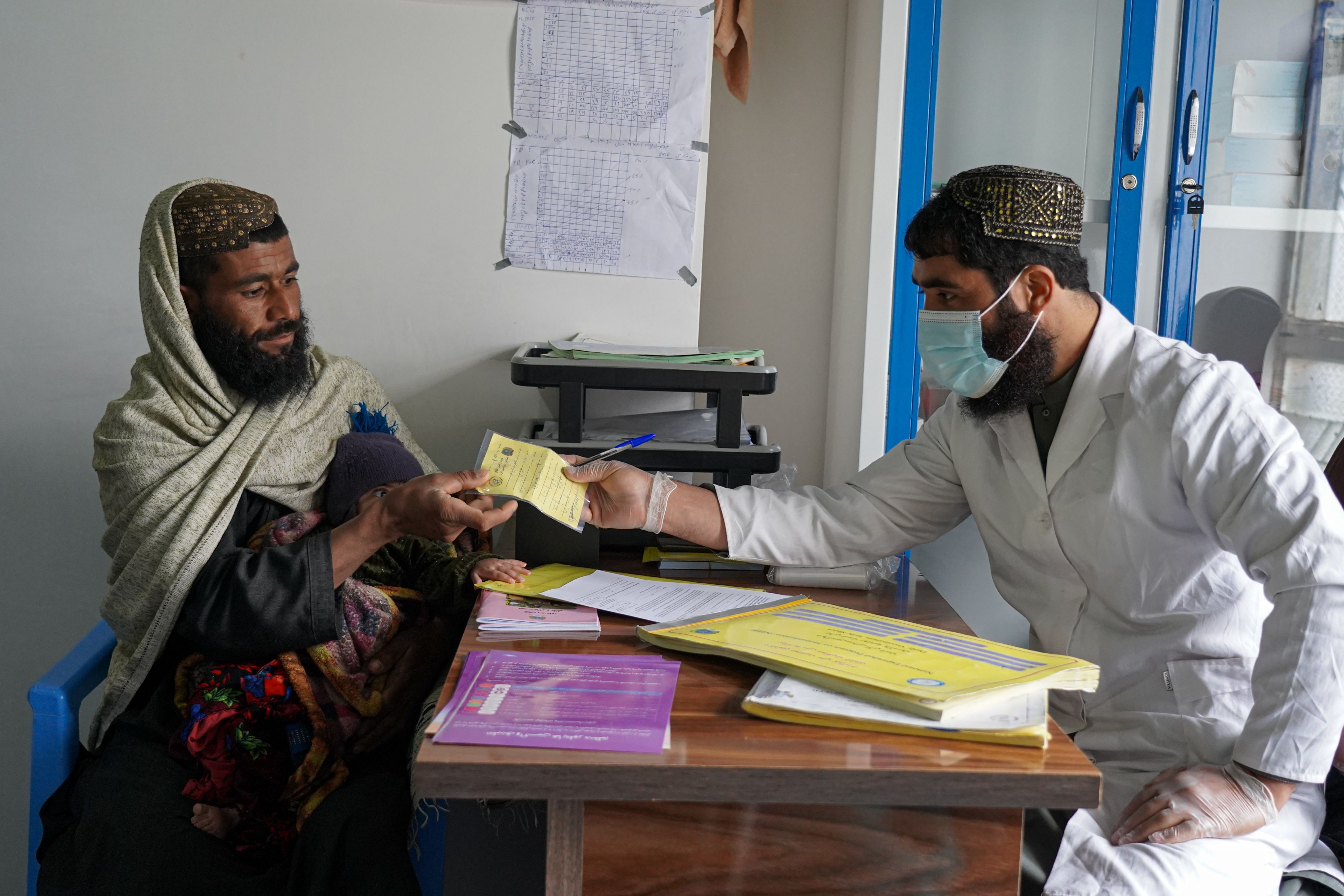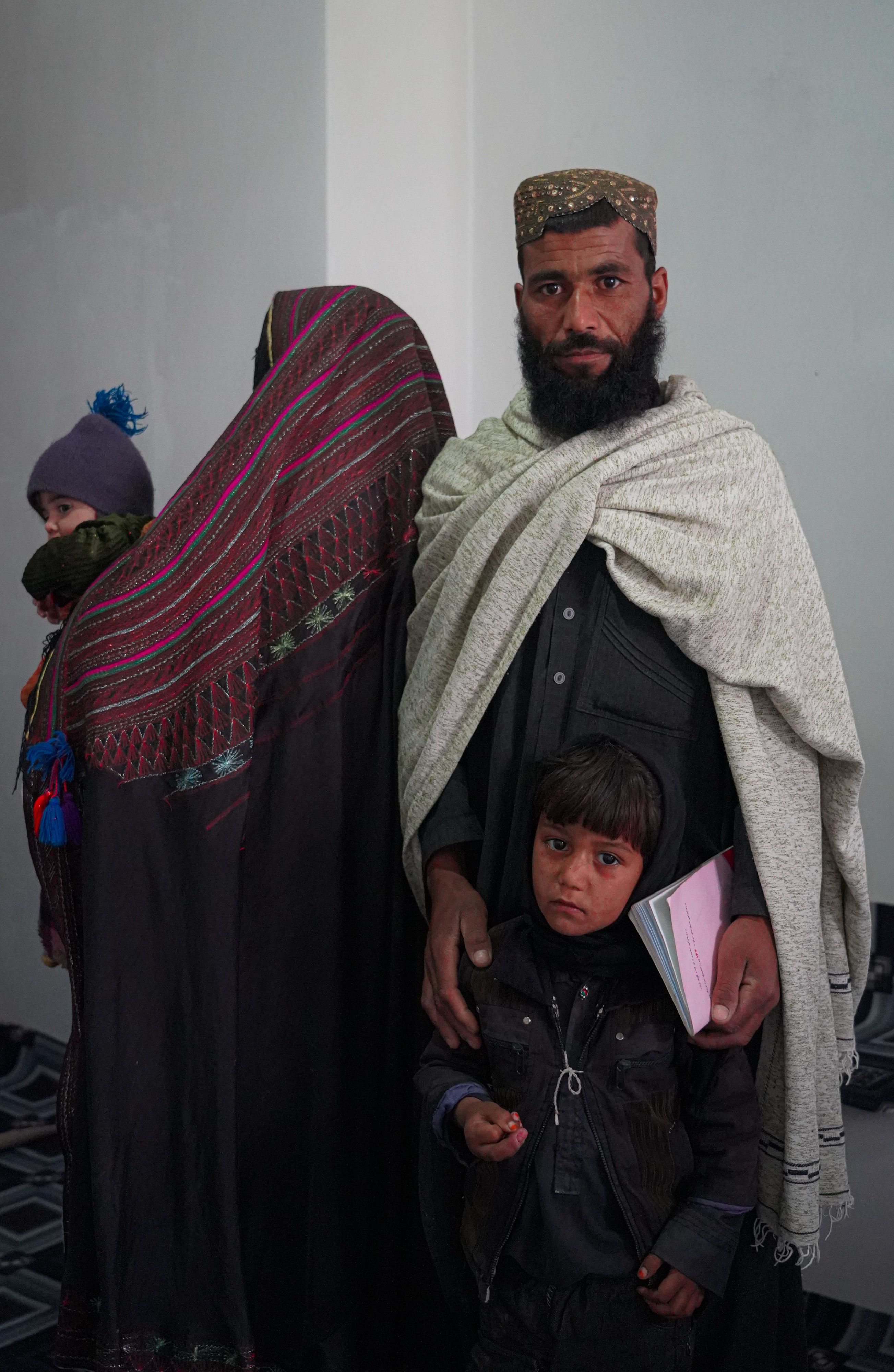Where immunisation falls short, Afghanistan's children pay with their lives
By Laurentia Jora, Strategic Communications Manager
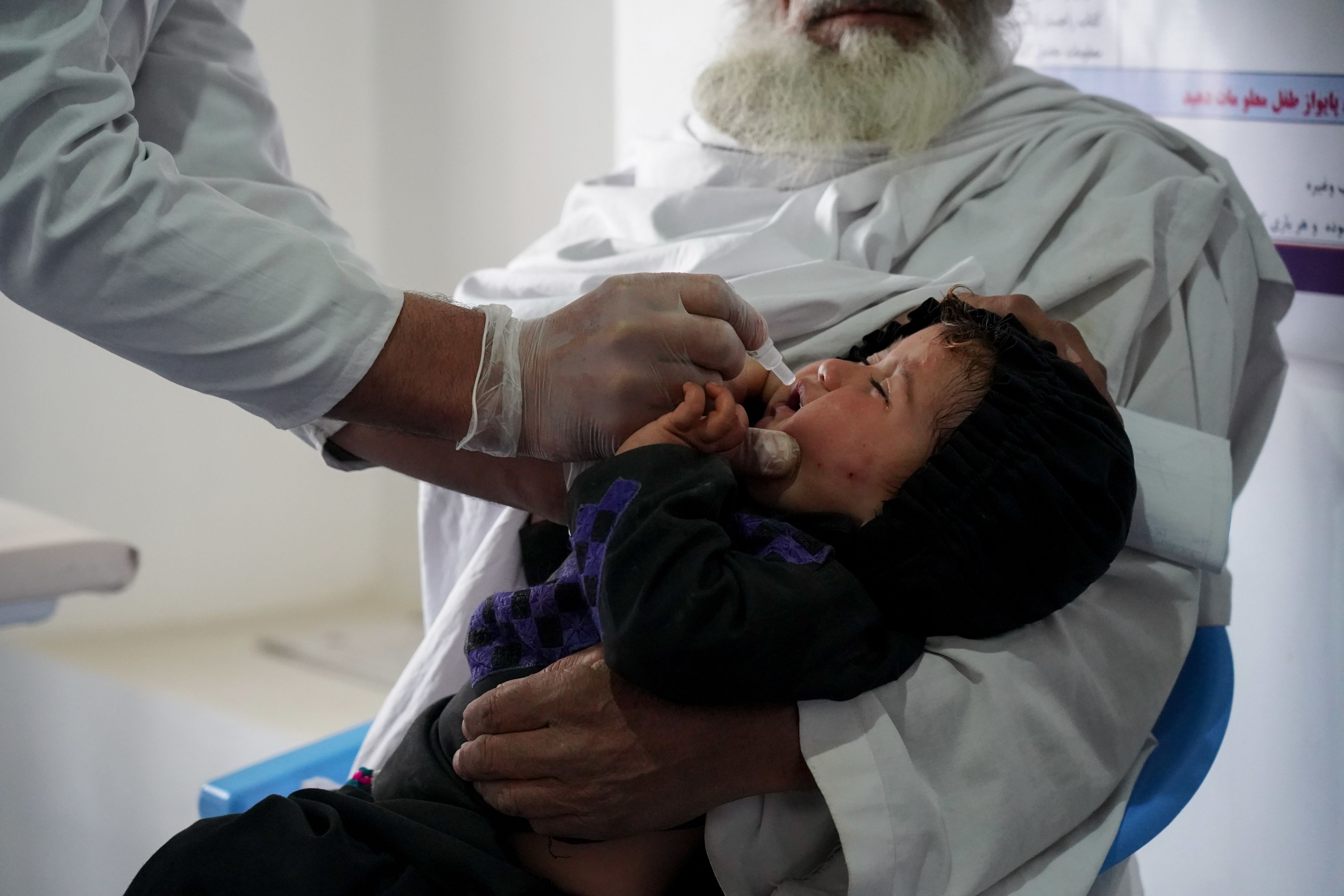
Abdul cradles his four-month-old daughter, Marzia, in his arms, standing in the crowded clinic hallway. Four hours from Qala-e-Naw, the capital of Badghis province in northwestern Afghanistan, this health facility, run by World Vision and funded by the German Federal Foreign Office (GFFO), serves 18 villages and provides care to over 17,000 people in this rural part of the country.
Inside, the air is thick with a blend of antiseptic, sweat, and the earthy scent of wet dust carried in from outside. The narrow hallway pulses with constant movement – footsteps shuffling, doctors calling out names, and the sharp wail of infants piercing the air.
The clatter of medical utensils echoes as patients move swiftly through the clinic, entering one of the nine rooms designated for various services: emergency care, malnutrition screenings, vaccinations, midwifery, prenatal and postnatal care, outpatient services, counselling, the pharmacy, and health awareness sessions. The pace is hectic and relentless, as a constant flow of people fills the space.
“I came to get my baby daughter vaccinated,” says Abdul, cradling Marzia, who has fallen asleep in his arms. His clothes cling to his body, soaked through with rain, the dampness seeping into his skin. His face is haggard, and his eyes are weighed down with the exhaustion of the long journey.
Abdul, his wife Parwana*, their four-year-old son Hashim, and baby Marzia walked for three hours to reach the clinic. The heavy rain turned the already uneven paths into rivers of thick, clingy mud, making the trip even more gruelling. They barely made it.
Today was the last day for Marzia to receive her next round of vaccinations – with no other means of transportation, walking was their only option.
*Name has been changed to protect the identity of the subject.
Four-month-old Marzia in her father’s arms at a World Vision clinic in rural Badghis province, northwestern Afghanistan
Four-month-old Marzia in her father’s arms at a World Vision clinic in rural Badghis province, northwestern Afghanistan
Besmillah, midwife at World Vision's clinic, checks the blood pressure of a woman in her fifth month of pregnancy during a routine prenatal visit.
Besmillah , midwife at World Vision's clinic, checks the blood pressure of a woman in her fifth month of pregnancy during a routine prenatal visit.
Due to the effects of climate change, such as devastating floods, roads become impassable. With no transportation options, people are forced to walk for hours just to reach the nearest health facility.
Due to the effects of climate change, such as devastating floods, roads become impassable. With no transportation options, people are forced to walk for hours just to reach the nearest health facility.
Sayed Abdul Basie Sayedi, the vaccinator at World Vision's clinic in rural Badghis province, administers the oral polio vaccine (OPV) to a four-month-old baby.
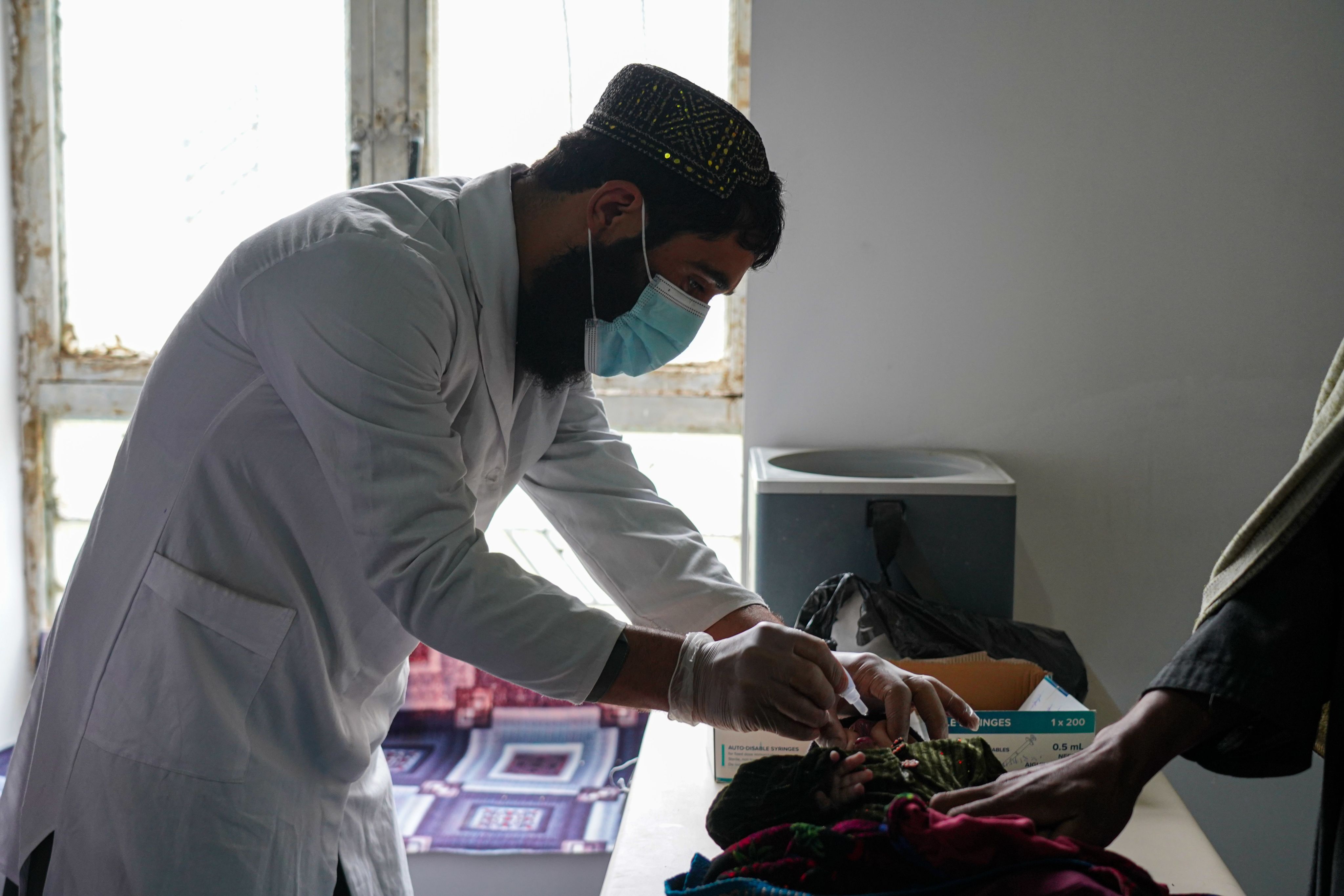
11-month-old Jamal receives the essential OPV vaccine.
11-month-old Jamal receives the essential OPV vaccine.
"I walked for three hours to get to the clinic. My grandson needs his vaccination. If we didn’t have this health facility, I’d have to walk six hours to the nearest one in the district," says Mohammad, baby Jamal's grandfather.
"I walked for three hours to get to the clinic. My grandson needs his vaccination. If we didn’t have this health facility, I’d have to walk six hours to the nearest one in the district," says Mohammad, baby Jamal's grandfather.
Jamal, 11 months old, after receiving his vaccines against polio and measles
Jamal, 11 months old, after receiving his vaccines against polio and measles
“Before this clinic opened, there were no medical facilities in this area. People had to travel nearly 30 kilometres to the district clinic. With no transport, that meant walking for seven to ten hours. It was an impossible journey for pregnant women, mothers with small children, or anyone who was seriously ill,” explains Sayed Abdul Basie Sayedi, the vaccinator at the clinic, as he prepares a dose of OPV for 11-month-old Jamal.
He is receiving a vaccination against polio, an infectious disease caused by a virus that primarily affects nerves in the spinal cord or brainstem and can cause total paralysis within hours. “It mainly affects children under five and it’s life-threatening,” explains the vaccinator, squeezing a few drops of the oral polio vaccine onto the baby’s tongue.
Polio has no cure, only prevention through vaccination.
Afghanistan is one of only two countries where polio remains endemic. As long as the virus continues to circulate, unvaccinated children remain at risk of lifelong paralysis. Ensuring every child receives the polio vaccine, particularly in hard-to-reach rural areas, is critical to stopping transmission and protecting future generations.
Nestled in the arms of his grandfather, Jamal blinks, startled by the sudden taste, then scrunches his chubby face and bursts into tears.
The next vaccine Jamal receives is against measles. “It’s another highly contagious disease caused by a virus that leads to severe complications and death. Measles is one of the world’s most contagious diseases,” shares Sayed, as he reaches for a fresh syringe.
Measles starts in the lungs and spreads quickly, causing high fever, cough, runny nose, and a rash. While it can be deadly for any child or adult, it’s even more dangerous for those who are malnourished. In Afghanistan, where over 3 million children suffer from acute malnutrition, the risks are much higher.

“Measles and polio are among the diseases with the highest outbreak rates in Afghanistan. Vaccinations play a critical role in preventing these outbreaks by building herd immunity and reducing transmission rates,” explains Dr. Ahmad Shakib, World Vision’s Health and Nutrition Sector lead.
Without access to vaccination services, especially in remote areas, communities face heightened risks of disease outbreaks, increased child mortality rates, and long-term health challenges. “Vulnerable groups, such as children and pregnant women, are particularly impacted, resulting in preventable deaths and placing major strain on already burdened healthcare systems,” shares Dr. Shakib.
Over the past 25 years, significant strides have been made in reducing the under-five mortality rate in Afghanistan, from 192 to 77 deaths per 1,000 live births between 2001 and 2015. These improvements are largely because of ongoing immunisation programs.
Most of the deaths are preventable, and vaccines play a critical role in saving lives. “Vaccinating all eligible children is one of the most cost-effective ways to prevent these deaths. For just a small investment in vaccines, we can avert serious illness, long-term disability, and death,” shares Dr. Shakib.
While substantial progress has been made, vaccination rates still remain low. Just 36.6% of children between the ages of 12 and 23 months receive basic immunisations in Afghanistan, and only 16.2% of children aged 24 to 35 months are fully vaccinated. This is largely due to limited access to healthcare in rural and remote areas, where families often face long distances to the nearest clinic.
"Every day, around 15 people come in for vaccinations,” explains Sayed, vaccinator at World Vision's clinic in the rural part of Badghis province, Afghanistan.
"Every day, around 15 people come in for vaccinations,” explains Sayed, vaccinator at World Vision's clinic in the rural part of Badghis province, Afghanistan.
World Vision delivers vaccines through the Expanded Program on Immunisation, including BCG, Hepatitis B, Oral Polio, Rota, Pentavalent, IPV, PCV, Measles, and Tetanus-Diphtheria.
World Vision delivers vaccines through the Expanded Program on Immunisation, including BCG, Hepatitis B, Oral Polio, Rota, Pentavalent, IPV, PCV, Measles, and Tetanus-Diphtheria.
Abdul unwraps his baby daughter, Marzia, from her thick blanket, preparing her for the next round of vaccines that Sayed, the vaccinator, is about to administer.
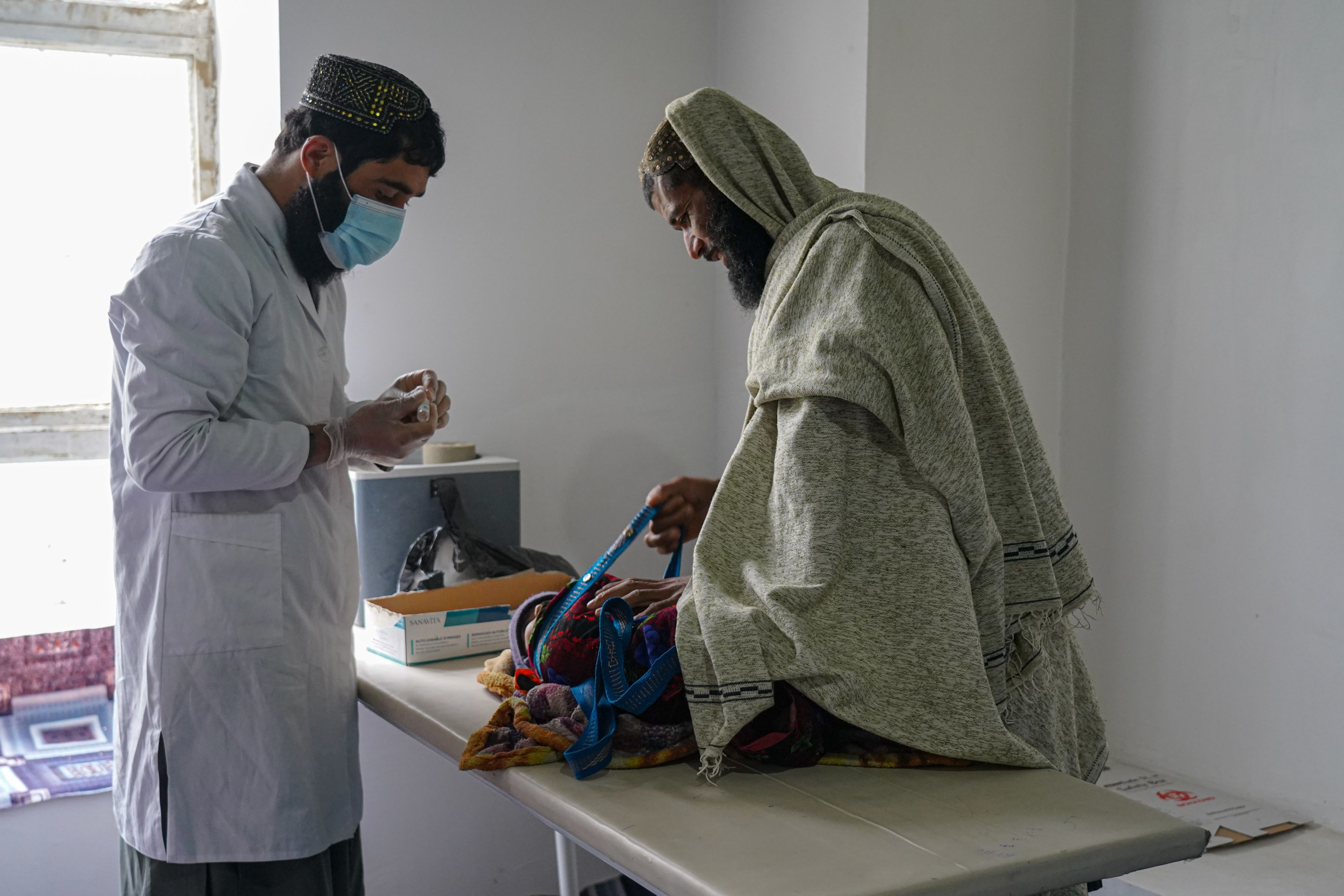
Four-month-old Marzia, just before receiving her vaccines
Four-month-old Marzia, just before receiving her vaccines
Marzia is administered the OPV (oral polio vaccine), which protects her against polio, a viral disease that can cause paralysis and even death.
Marzia is administered the OPV (oral polio vaccine), which protects her against polio, a viral disease that can cause paralysis and even death.
Marzia is administered the PCV (Pneumococcal Conjugate Vaccine), which protects her against pneumococcal infections, a leading cause of pneumonia, meningitis, and sepsis.
Marzia is administered the PCV (Pneumococcal Conjugate Vaccine), which protects her against pneumococcal infections, a leading cause of pneumonia, meningitis, and sepsis.
Parwana*, mother of five, holds little Marzia after she has received all her required vaccines.
Parwana*, mother of five, holds little Marzia after she has received all her required vaccines.
This lack of access, combined with a lack of awareness about the role of vaccines, has serious consequences. While non-communicable diseases, illnesses that are not passed from person to person such as heart disease or cancer, account for more than half of all deaths in Afghanistan – 52%, the remaining 48% are linked to infectious diseases, many of which could be prevented through vaccination.
“Outbreaks were common here, especially malaria and measles. Every day, around 15 people come in for vaccinations,” explains Sayed, as he carefully instructs Mohammad, little Jamal’s grandfather, on the next round of vaccinations and timelines.
“If this clinic didn’t exist, we would see far more diseases and many more lives lost,” says Sayed, calling Abdul’s family next.
“I’ll be giving her the first shots for polio and rotavirus today. She’ll also receive the pentavalent and PCV vaccines,” Sayed explains, as he walks Abdul through the purpose of each vaccine for his daughter.
Abdul gently unwraps baby Marzia from her thick blanket, exposing her tiny leg for the vaccine.
The father of five earns a meagre living building houses from clay and mud in a nearby village – ten hours of labour each day for just 300 Afghanis, or about four dollars.
But the greater challenge is that the work is seasonal. “Some weeks, some months, there’s no work at all,” he says.
When he does earn, he buys only the essentials, just enough to get by. There have been many days where he has had nothing to feed his children. Meals are often plain, lacking vital nutrients. “We eat potatoes and whatever vegetables we can gather from the mountains,” he adds.
Abdul, his wife Parwana, and their five children live in a makeshift tent of cloth and plastic, set up on barren land nearly three hours from the clinic. It offers little protection from cold, heat, or rain, but it is all they can afford.
“We cook only once a day,” Parwana says softly, her face covered in a large burgundy hijab. It can take her two to three hours to prepare a single meal. “First, I go out to collect twigs or dry grass for the fire. Sometimes it takes an hour just to find enough.”
She boils water and cooks whatever food the family has managed to gather. They fetch water from the river, carrying it back in plastic containers. On the dry soil nearby, they’re trying to grow corn and onions.
To help support the family, Parwana weaves scarves by hand, a laborious process that takes her a month to complete. “If I’m able to sell one scarf, I earn 500 Afghanis [US $5],” she says.
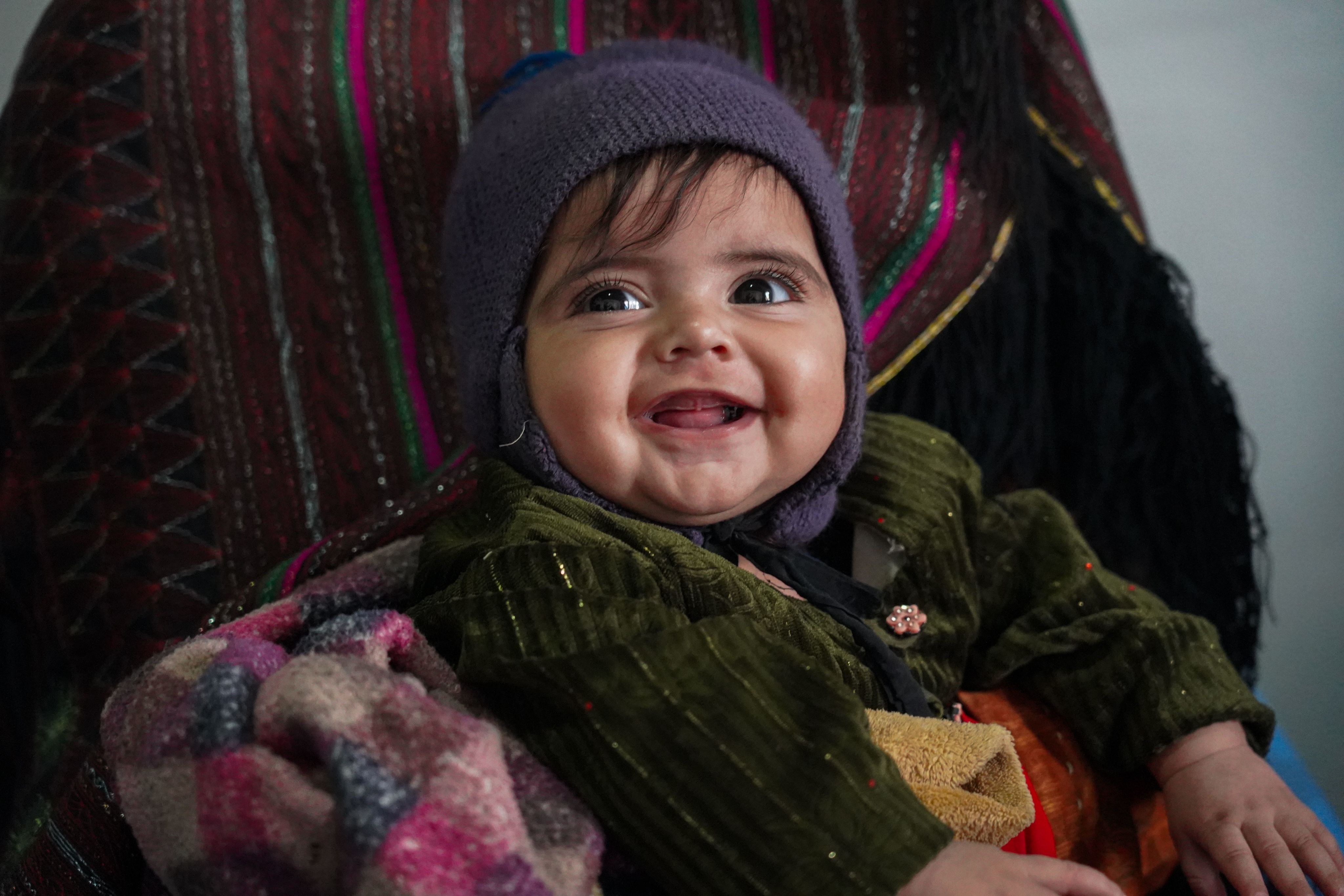
Cradling little Marzia, still sobbing after receiving her vaccine shots, Parwana shifts her weight from one foot to the other. She adds, her voice barely a whisper, “My dream is simple. I want us to have a home of our own, and the chance to give my children an education. But most of all, I want them to be healthy.”
She pauses briefly, before adding, “I’ve seen what outbreaks can do. These health services have been lifesaving for my children.”
World Vision delivers vaccines through the Expanded Program on Immunisation, including BCG, Hepatitis B, Oral Polio, Rota, Pentavalent, IPV, PCV, Measles, and Tetanus-Diphtheria. These vaccines save children from diseases that would otherwise take their lives.
When vaccination programs are halted, preventable diseases rapidly spread, causing higher mortality rates, particularly in regions already burdened by poverty, and an underfunded health system.
In Afghanistan, it is the children who bear the heaviest toll. If we fail to sustain and fund health and immunization programmes, we jeopardize the progress made over decades, leaving the most vulnerable at greater risk of death.
In 2024 alone, more than 870,000 people, including over 516,000 children, accessed World Vision’s health and nutrition support.
Sayed, the vaccinator, explains to Abdul when the next round of vaccines will be due for his little daughter.
Sayed, the vaccinator, explains to Abdul when the next round of vaccines will be due for his little daughter.
Abdul, with his two children, Marzia and Hashim (4), and his wife Parwana
Abdul, with his two children, Marzia and Hashim (4), and his wife Parwana

